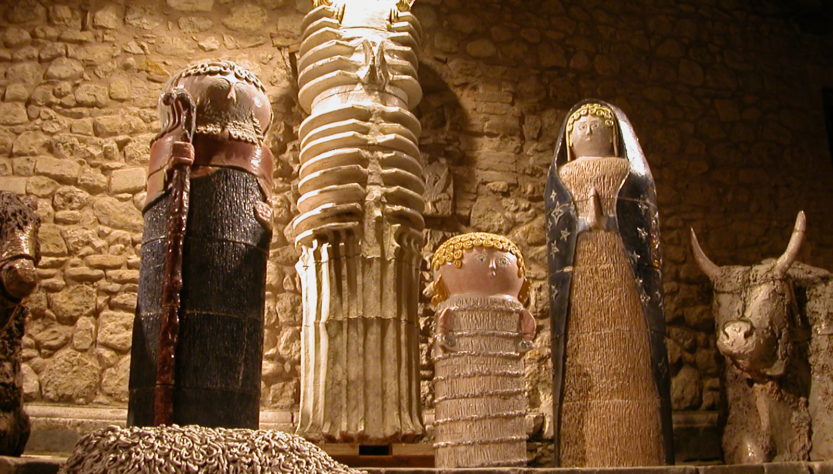In the tradition of economic and cultural Abruzzo, the craftsmanship played a role certainly not marginal.
For centuries, in this region, handicraft, agriculture and pastoralism were fed each other: farm work and cattle breeding sheep have characters complementarity since the Bronze Age, when you set a mixed economy of subsistence and maximum use of the resources made available by a natural rugged and mountainous; the craft is included in this framework as a productive service economy agro-pastoral and this pre-eminent feature has drawn many resources for a permanent, in some historical periods, abundant presence, adapted with considerable technical and organizational adaptability to different market demands. The blacksmiths shops, carpenters, crowded, stonemasons, tinai, potters, shoemakers, and others have produced objects indispensable to their communities, transmitting from one generation to another, from masters to apprentices, a legacy of technical and practical skills, always aimed to combine creativity with the precision and accuracy Executive, the aesthetic goal with the essential functionality of the objects.
And next to this service production spread in the territory in a widespread manner, and active until recently, Abruzzo's craftsmen have been and still are the bearers of a tradition whose artistic and technical level has given them a deserved reputation beyond regional boundaries.
Some centers, thanks to favorable historical conditions and environmental, have established for particular specializations. Suffice it to say, just to mention the most famous, Pescocostanzo and Scanno (Aq), famous for its goldsmiths and for pillow lace, or Guardiagrele (Ch), important center for metalworking, or Castelli (To), capital of ceramic art in Abruzzo, or still Lettomanoppello (On), home to stonemasons.
It must not be forgotten, also, refined fabrics in wool and cloth kit, the precise forms and read the works to plot, the tiny variety of decorations for carving on wood, the creative solutions in the mosaics of glass.
Today more than ever, the craft is renewed in Abruzzo.
The teachers who work in different locations in the region, aware repositories of centuries of experience in the transformation of matter that arises above the uniform mass production, propose to the current market its ability to integrate motifs and techniques of an illustrious tradition with new ideas for research in materials and design, creating objects with equal competence 'use as artifacts of great artistic importance.
In their work is preserved, so, and constantly revitalizes a significant portion of the cultural identity of Abruzzo.
